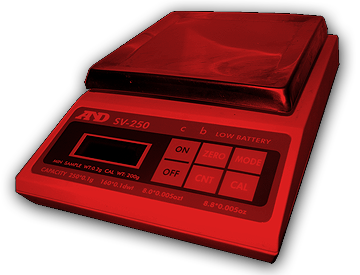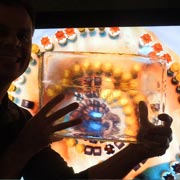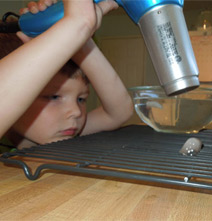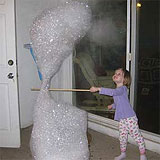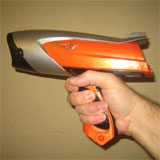How Long Does it Take Beer to Explode in the Freezer?
After extensive experimentation discovering faster ways to chill beer, I have to admit, using the freezer is easiest.
Sure, cooling something with air takes twice as long, but it's dry, and requires no set-up.
The freezer has an additional problem: Your drinks might explode.
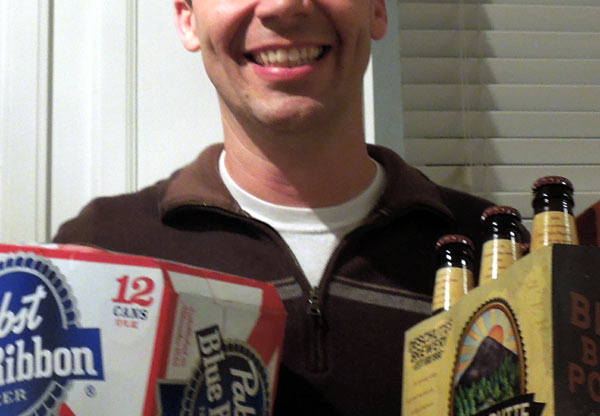
The threat of exploding beer has kept me on my toes for years. A freezer beer explosions are dreaded, hated, notorious, infamous. Not only is the contents of your freezer showered with fresh yeast water and glass, your beer supply is destroyed.
Luckily, my experience with freezer beer explosions has been very limited, and I would like to keep it that way. In a sober moment of clarity, I came up with a plan: I'd time how long it takes for beer to explode in the freezer, then use that information with a regular kitchen timer to prevent explosions.
In consideration of how much setup was required, I decided to test both types of beer container. I purchased warm beer. I also got some flat soda and a cold cup of coffee.

To protect my Magnum bars and buffalo chicken strips from being compromised, I moved them to an ice chest. I also buried the hooker.
Being tested were the following: A 12-pack of Pabst cans, a six pack of Butte Creek Bottles, a two-liter of RC cola and a single pouch of Capri Sun.

At 7:37pm, the test began.
I knew I would have to limit the number of times which I opened the door, so I planned to wait a good long time before opening the freezer door to check.

At 9:05pm, I heard a "Pop!". That was the beer exploding.
But it wasn't. Nothing was amiss and worse, the beer wasn't even cold yet. In my effort to combine three tests into one, I had dumped a lot of warm liquid into the freezer all at once. I closed the door and added it up. 18 beers, a two-liter and a Capri sun is more than two gallons of warm liquid. This was going to take a while.
At 10:07 I slid my hand into the freezer to cop a feel. The beers were cold, and the capri sun pouch felt crunchy. Maybe ice was forming inside.
Unfortunately, I hadn't included a control, a regular glass of water. All of my liquids were complex, containing sugar or alcohol, which would lower their freezing temperature. The beer and soda were also carbonated, which would make them even less susceptible to freezing.
At 10:50, there was no change.

At midnight (actually 12:05am) nothing had exploded. I opened a beer and tested the temperature. When I was almost finished, I checked it with a thermometer. 25°F. Interesting. It was well below the freezing point of water, but hadn't exploded yet.
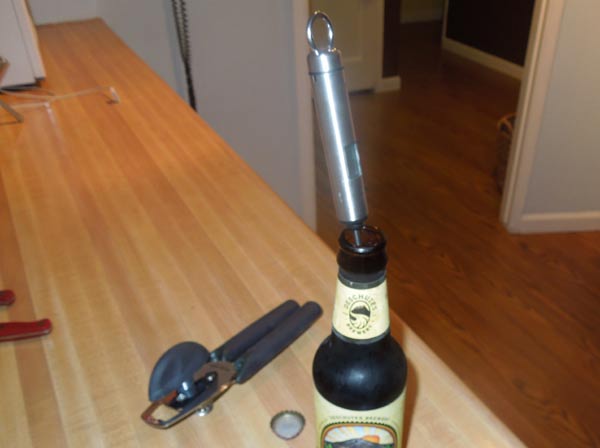
At 12:50am I had finished my beer and came back for another one. I opened a Pabst and tested the temperature: 36°F? That didn't add up. How could the cans, which were a much more thermally transparent, be cooling at a slower rate than the bottles? The paperboard 12-pack box was the only factor I could think of, but it didn't seem possible.
At 1:25am, I had a lot of cold beer in the freezer, but no explosions. The juice was definitely crunchy and had been rebranded as Capri Moon.
The experiment continued while I slept.
At 4:20am the alarm woke me. This is my usual "wake and bake" time, as I am a very heavy user of marijuana and respect the cultural mythos of the drug. No, I was up checking on the beer. The beer was intact. The 2-liter of soda was rigid, almost a solid block. The Capri Moon was full of ice, but not yet solid.

Was this ever going to end? Did beer container technology improve recently, or were exploding beer bottles a myth? I inspected the cans and found no evidence of bulging or distension. They were fine. I was really surprised.

At 7:05am the cans were full of slushy beer. I measured one at 14°F. The bottled beer was also slushy, also 14°F.

At this point, I scaled back the experiment. I had to go to work, and be gone for 10 hours. Destroying more than about 4 beers gets you in trouble with the science community.
Cockeyed home page | Contact | Terms and Conditions | Updated November 4, 2012 Copyright 2012 Cockeyed.com


